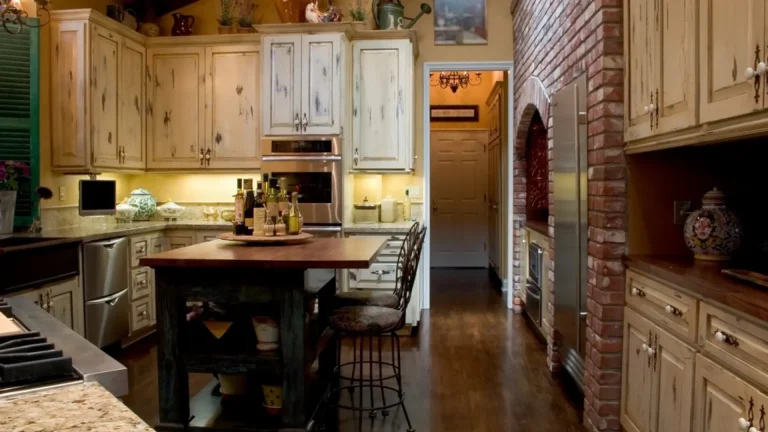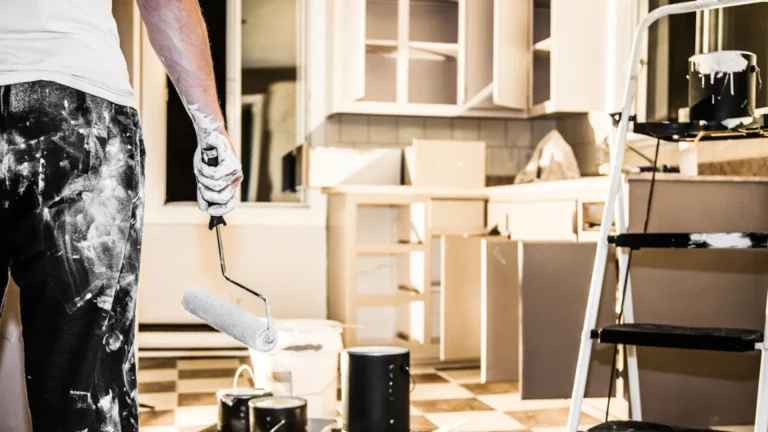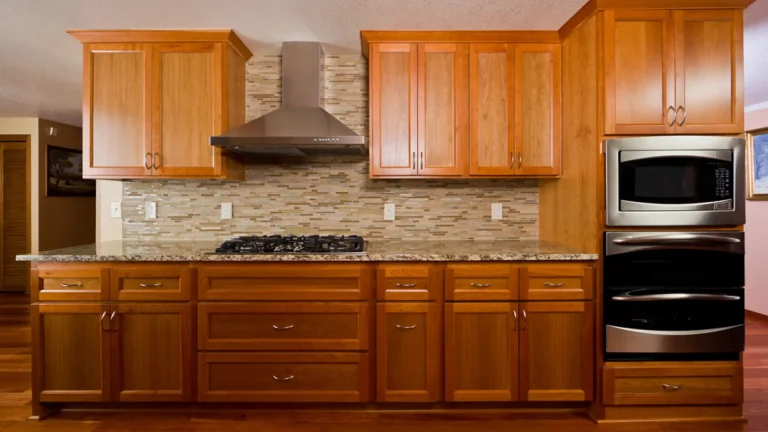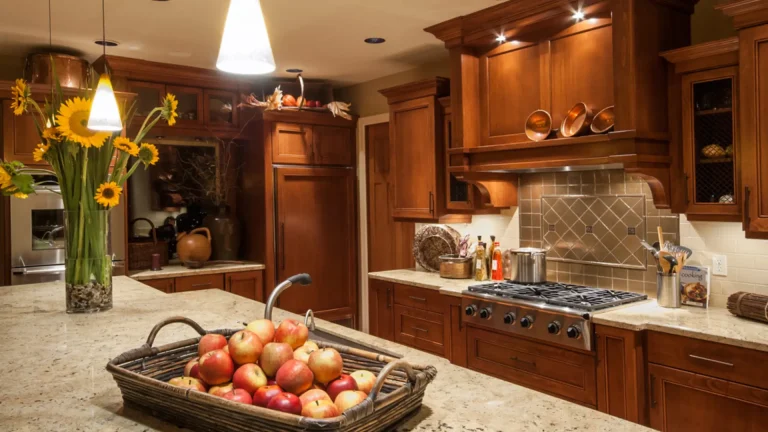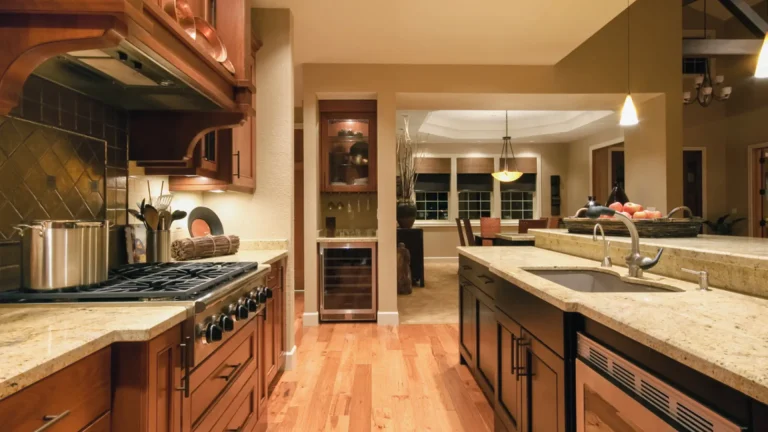How to Reface Kitchen Cabinets for a Fresh Look? – A Comprehensive Guide

Refacing kitchen cabinets is a popular home improvement project for those looking to refresh their kitchen’s appearance without the cost and hassle of a full renovation. This process involves replacing the cabinet doors and drawer fronts while covering the existing cabinet boxes with new veneer. By choosing to reface rather than replace, homeowners can achieve a dramatic transformation in their kitchen’s aesthetics with significantly less expense and disruption. This guide will walk you through the essentials of how to reface kitchen cabinets, ensuring you have all the knowledge to bring a fresh look to your kitchen.
What is Kitchen Cabinet Refacing? – A Detailed Overview
Kitchen cabinet refacing is a cost-effective and eco-friendly alternative to complete cabinet replacement. At its core, refacing involves updating the visible surfaces of your cabinets – the doors, drawer fronts, and the exterior of the cabinet frames. This process allows for a remarkable change in appearance, emulating the look of entirely new cabinetry.
It’s an ideal option for cabinets that are structurally sound but cosmetically outdated. By retaining the existing cabinetry structure, refacing minimizes waste and keeps the usable materials out of landfills, making it a sustainable choice for modernizing your kitchen.
How Cabinet Refacing Works?
Cabinet refacing starts with a thorough assessment of your existing cabinetry to ensure it’s a suitable candidate for refacing. The process then moves on to removing the old doors and drawer fronts. The cabinet frames are prepared for the new veneer by cleaning, sanding, and sometimes minor repairs. This preparation is crucial for ensuring the new materials adhere properly and the finish looks seamless and professional.
What Does Refacing Kitchen Cabinets Involve?
Refacing kitchen cabinets involves several key steps: selecting new doors and drawer fronts, choosing the veneer for the cabinet boxes, and deciding on new hardware. Each component plays a crucial role in the overall aesthetic and functionality of your refaced cabinets. The process is customizable, with a wide range of materials and styles available to fit various kitchen designs and homeowner preferences.
Material Required for Cabinet Refacing
The materials required for cabinet refacing include:
How to Reface Kitchen Cabinets?
Select Materials
Selecting the right materials is the first step in the refacing process. This choice will define the look and feel of your updated kitchen. Consider the style of your home, the existing décor, and your personal preferences when choosing materials for doors, drawer fronts, and veneer.
Prepare Cabinets
Preparing the cabinets is a critical step that involves cleaning the surfaces, removing old doors and hardware, and making any necessary repairs to the cabinet boxes. This preparation ensures that the new materials will adhere properly and the finished product will look professional.
Make Plywood Panels
For areas that cannot be covered with veneer, custom plywood panels may be required. These panels are cut to size and finished to match the new cabinet doors and drawer fronts, providing a cohesive look across all visible surfaces.
Cut & Apply Veneer
Applying the veneer to the cabinet frames is a delicate process that requires precision. The veneer must be carefully measured, cut, and adhered to the cabinet boxes, ensuring a smooth, bubble-free finish that aligns with the doors and drawer fronts.
Finish Doors & Drawers
Finishing the doors and drawer fronts can involve painting, staining, or applying a clear coat, depending on the material and desired look. This step is vital for ensuring durability and resistance to wear and tear.
Assemble Cabinet
With all components prepared, the final step is to assemble the cabinets. This involves attaching the new doors and drawer fronts, installing the hardware, and making any necessary adjustments for a perfect fit and smooth operation.
Cabinet Refacing Tips
How Much Does Refacing Kitchen Cabinets Cost?
The cost of refacing kitchen cabinets can vary widely depending on the materials chosen and the size of the kitchen. Generally, it’s significantly less expensive than a full cabinet replacement, offering a budget-friendly way to update your kitchen.
Pros of Refacing Kitchen Cabinets
1) Less Expensive and Time-Consuming
2) No Major Construction
3) Wide Range of Styles
4) Eco-friendly Alternative
Cons of Refacing Kitchen Cabinets
1) Professional Installation May Be Required
2) Refacing Doesn’t Always Save Money
3) Doesn’t Change the Existing Layout
FAQs
Conclusion
Refacing kitchen cabinets is an excellent way to update your kitchen’s appearance without the cost and inconvenience of a full remodel. By selecting the right materials and following the steps outlined, you can achieve a stunning transformation that revitalizes your kitchen. Whether you choose to DIY or hire professionals, cabinet refacing offers a cost-effective, stylish, and eco-friendly solution for your kitchen renovation project.

![How Much Does It Cost to Paint Kitchen Cabinets? [2024]](https://homifyco.com/wp-content/uploads/2024/02/how-much-does-it-cost-to-paint-kitchen-cabinets-768x432.webp)
